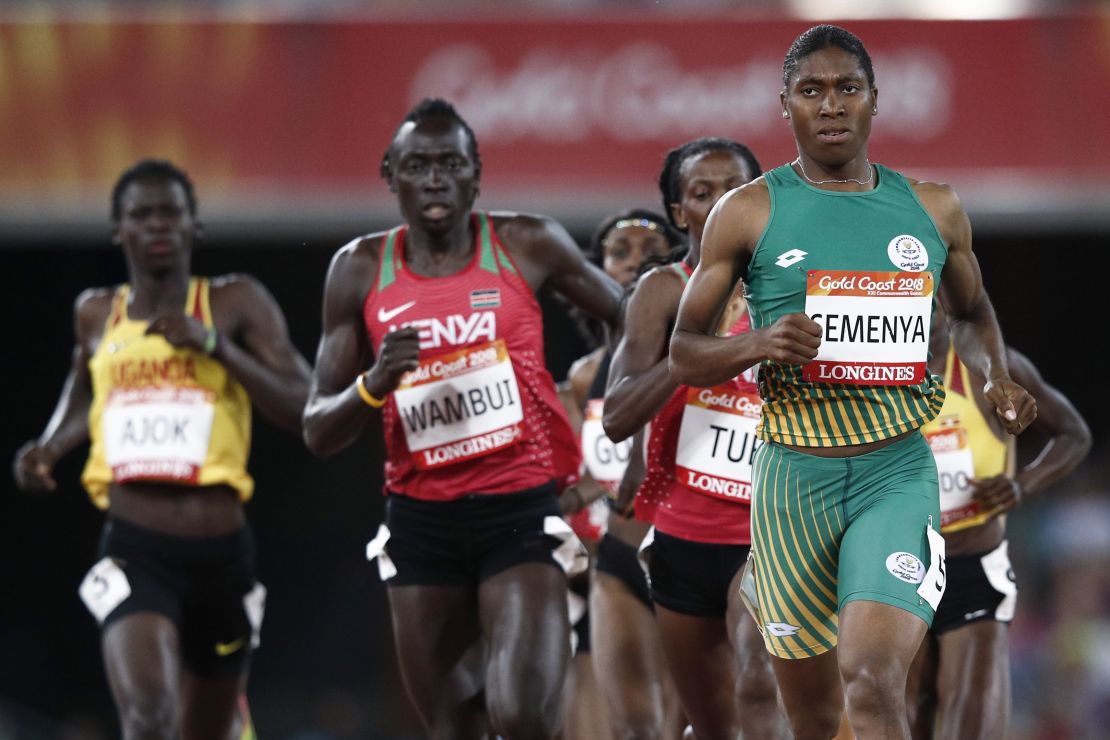South Africa’s two-time Olympic champion Caster Semenya told CNN that having to take testosterone-reducing medication in order to compete internationally was “hell” and had a negative impact on her health.
In her new book, “The Race To Be Myself,’ Semenya describes the damaging impact the medication had on her body and now says she wants to use her platform to stop other women having to endure the same thing.
“I would say it was hell because each and every day you live under stress,” Semenya told CNN’s Bianna Golodryga, speaking about taking the medication.
The runner has been at the forefront of controversy.?She has been supported by athletes of world renown like tennis great Martina Navratilova but British runner Lynsey Sharp tearfully said how “difficult” it was for her and others to compete against Semenya.
Sharp broke down in tears after watching Semenya storm away to victory at the Rio Olympics in 2016.
Semenya?is hyperandrogenous – meaning she has naturally high levels of testosterone – and is fighting against new rules introduced in 2019 by track and field’s governing body World Athletics (WA) – and previously known as the IAAF – that regulate levels of the hormone in female athletes.
In July this year,?Semenya?won an appeal which she had submitted to the European Court of Human Rights (ECHR) to end the?testosterone limits.
“You are not happy within; you are never happy. It makes you feel sick, nauseous. You have panic attacks. It starts creating a little bit of blood clots in your system,” Semenya says.
“Your stomach is burning. You eat a lot. You can’t sleep. You sweat a lot each and every day.
“It’s like digging a hole that you can never fill up. You know, it’s like you measure a casket and you get in and then you bury yourself. It was not easy. It was a hard time.”

In a statement to CNN, World Athletics said it stood by its rules and research.
“World Athletics has over a decade of research, directly from DSD athletes in our own sport, that show high testosterone levels do provide an unfair advantage in the female category,” World Athletics said.
“The research also shows that the frequency of DSD individuals in the elite athlete population is around 140 times higher than you will find in the general female population. This is why our guidelines on testosterone thresholds are necessary, reasonable, and proportionate to protect the integrity of the female category and have been upheld by two Courts.
“If we don’t protect the female category, then women and young girls will not choose sport.”
Inconclusive impact on performance
Semenya won the 800m gold medal at both the 2012 and 2016 Olympics?Games,?but the rules introduced by World Athletics in 2019 meant she would need to take testosterone-reducing medication in order to compete internationally over distances between 400m and one mile – something she has declined to do. She was unable to defend her 800m crown in Tokyo in 2021 because of the rule changes.
Variations in people’s reproductive anatomy, chromosome patterns or other traits that may not align with typical binary definitions of female or male are what is defined as differences in sex development (DSD).
It is difficult to estimate how many people have DSD traits – many live their entire lives without ever knowing they have one. Scientists estimate as many as one out of every 50 people is born with DSD traits.
Semenya acknowledged the differences in her body but insisted DSD athletes did not have an unfair advantage in the sport.
“I’m born a woman, but I’m a woman with no uterus. I have no fallopian tubes. I don’t go through menstruation,” Semenya said.
“Yes, I’m different, but it doesn’t make me less of a woman.”
“I am here where I am because of dedication, hard work, discipline and all those things,” she added.
“But then is it considered a threat to a man in sport because, when a woman does great, it becomes a problem. But when a man does good, they’re phenomenal.
“But genetically, it’s something that you can say you cannot control it.”

Semenya has been locked in a battle with World Athletics – notably with its president Sebastian Coe – for almost a decade over the issue of testosterone regulation and lost appeals against the ruling in both 2019 and 2020.
The science on the matter is not entirely conclusive.
Retired endocrinologist Peter Sonksen told CNN in 2021 that “there is good evidence to show muscle bulk increases with increasing dosage of testosterone,” but added that the relationship between blood testosterone level and performance remains “complex and controversial.”
New chapter
Semenya, 32, said she felt ready to write a book about her life, but admitted facing questions about her gender at an early age was difficult.
In the book, she said she was 18 when she first faced scrutiny from World Athletics, then known as the IAAF.
Semenya described the moment as “life-changing.”
“You are 18 years of age and then you get asked if you are not woman enough. Your entire childhood you have been a woman, regardless of the differences that you have in your body,” she said.
“But I think for me, what I had to turn around was the humiliation, you know, the injustice and people treating me with no respect.
“I think the importance for me was knowing who I am, my identity and carrying that to represent my country.”
Semenya said she would continue to “advocate for what is right” for women’s sport, proof that one of the most dominant athletes of her time has not turned her back on the sport she loves quite yet.



